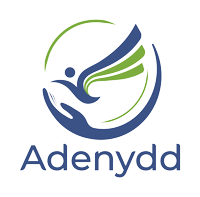POISSD for Learning
Providing Opportunities for Sensorimotor System Development
What is POISSD for Learning?
Jo Southan, co-founder and Trustee, and Gela Griffiths, co-founder and CEO, have completed their BUSS Level 1 training and are excited to be trialling the Early Years LEAPlets group in a local school. Whilst we recognise that this model fits well for adopted and fostered children running these groups is costly in terms of time, expertise and resources. We want to explore how the learning from this model could be included in everyday practice in the classroom, nursery or Flying Start Centre. We are calling this project POISSD for Learning. Our hope is that we can include and embed opportunities for sensorimotor system development into everyday activities in Flying Start settings, nurseries and schools so that children who need more support in developing these foundational skills to enable them to access learning will be able to do so as part of their daily routine.
BUSS stands for Building Underdeveloped Sensorimotor Systems and the model was developed by Sarah Lloyd. You can visit their website by clicking here. They also have helpful videos outlining the programme and some of the activities here. We have also linked to some of the videos when we have described activities below.
Tummy time
(click the title to view a helpful video)
Being on our tummies is really important for developing strength in the right body parts in the right order to develop as well as we possibly can. First comes head control, then neck and shoulder girdle. We need a strong core and for this to be stable in order to be able to walk, run, sit up properly, go up and down stairs.
Can your child have a snack on their tummy or have a book read to them in this position? Do some colouring in this position? What else can you find to practice being in this position in a fun way?
Tactile games - feely bags
(click the title to view a helpful video)
We can help children to learn to use touch to discriminate between things. We are born the tactile system is in defensive mode and when we experience heathy touch, security and safety it shifts into a discriminatory function and we can use it to learn about the world around us.
Crawling
(click the title to view a helpful video)
This is an important activity for developing hand/finger specialisation which leads on to good fine motor control for things such as writing. The wrist bones and finger bones develop and strengthen when a child is given enough opportunity to crawl. Some children walk early may need more encouragement to practice this important activity. Can you find fun ways to give them more opportunities to crawl?
Our rhymes and activities
Working together with local schools ...
We are proud to be invited to work together with the following lovely schools to help them develop new ways to nurture and support their learners and families
Waun Wen Primary School
Craigfelen Primary School
Like our work?
Let's work together
Would you be interested in hosting or commissioning one of our projects? Why not have a chat with our CEO, Gela Griffiths, about how we might work together?
Got a new idea? We love learning new things and developing new projects - please get in touch!




